Bachman's Sparrow
Peucaea aestivalis
Status: Vulnerable
The Bachman’s sparrow, also known as the pine woods sparrow, is striped reddish brown and has a dingy buff colored breast. It is shy, playing hide and seek in the grasses, but will perch on a small tree when it sings. It’s domed shaped nest is built on the ground near a clump of grasses or at the base of small trees. A understory of native grasses such as bluestems, Indian grass, switch grass, and broom sedge provide ideal habitat for these birds. Native bunch grasses allow the birds to easily move along the bare ground eating seeds and insects while providing cover from above.
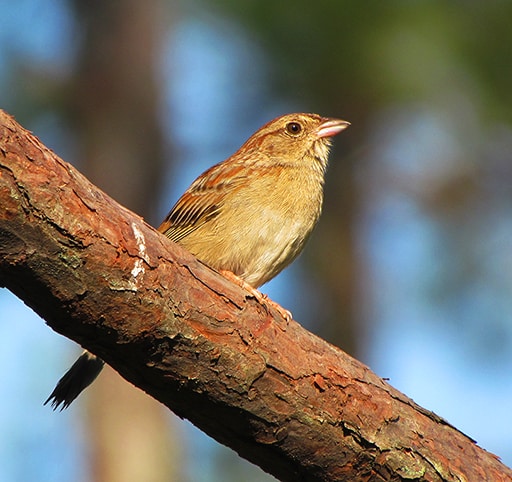
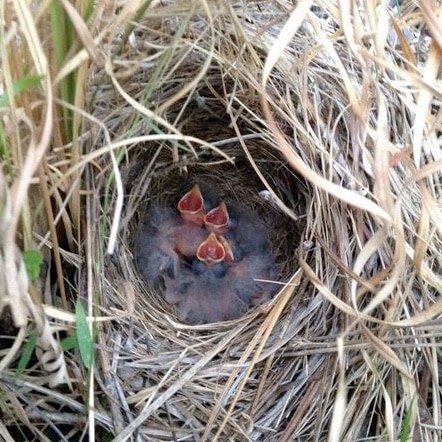
Habitat & Range
The Bachman's Sparrow is a year-round resident across the southeastern United States. This bird depends on mature open pine forests as habitat, as they typically build their nests at the base of a shrub, clump of grass, or palmetto. The seeds of these grasses are also an important food source for the Bachman's Sparrow, especially in the winter months.
Food Web & Energy Flow
The Bachman's Sparrow finds most of its food on the forest floor, carrying their finds up to low branches to eat. They eat mostly small insects during the summer, and seeds from the forestland grasses in the winter. This makes the Bachman's Sparrow a secondary consumer.
Relationship to Fire
Since the Bachman's Sparrow depends on bunch grasses growing on the forest floor, fire is important to maintain adequate sunlight and space for the grasses to grow.

Conservation Status
The Bachman's Sparrow is found in many parts of the longleaf pine range. As illustrated in the map below, this species is considered under different levels of pressure in different states, but considered Vulnerable overall.
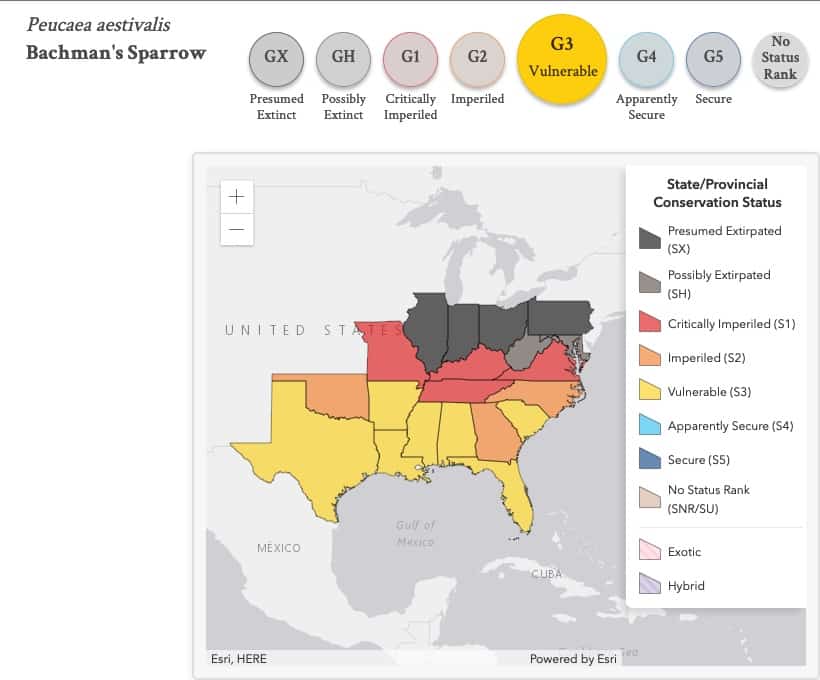
Human Impacts/ Threats
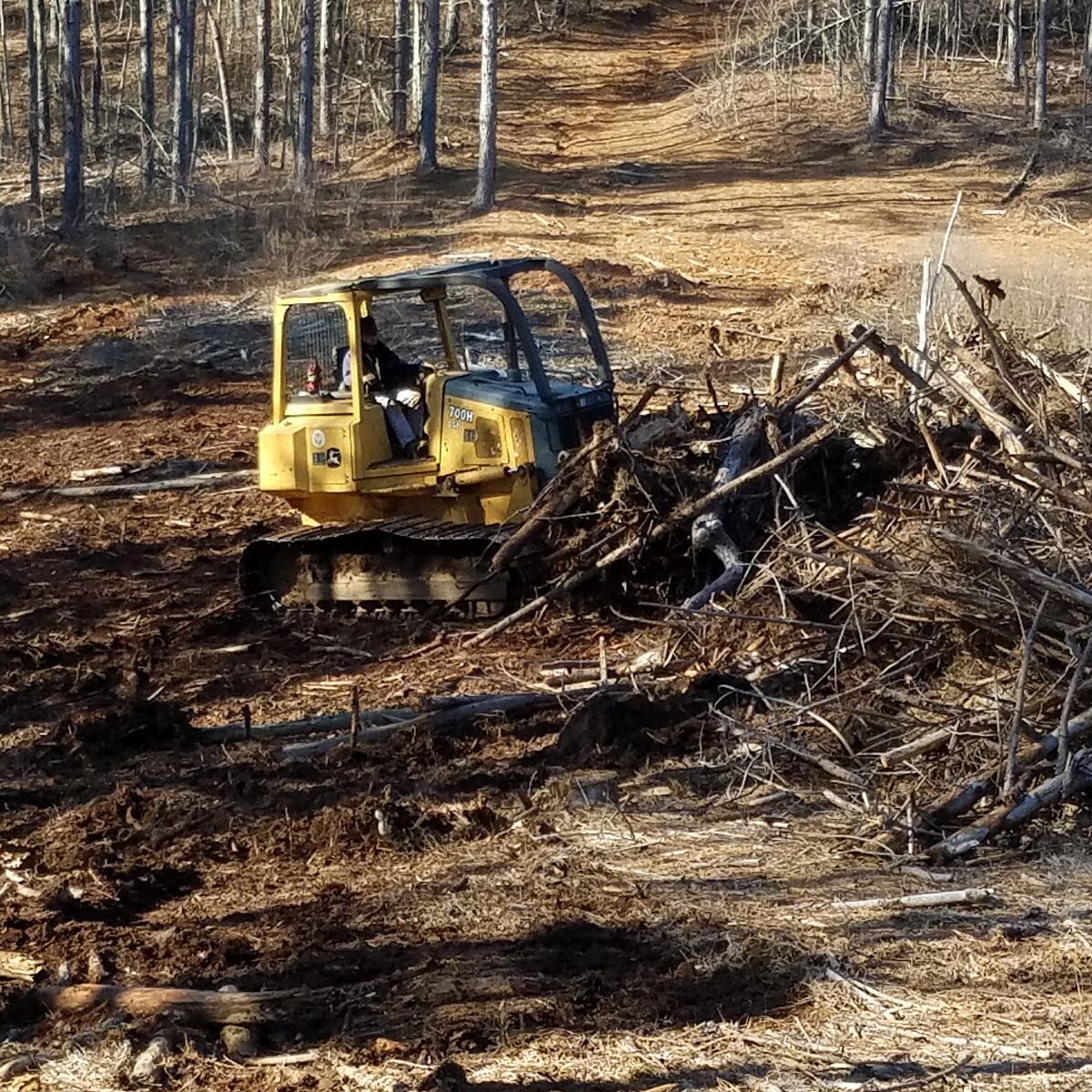
Land Use Conversion
Longleaf forests and the habitat it supports is being cleared or converted to use the land for other uses like houses, roads, agriculture, and even to grow different types of trees to sell.
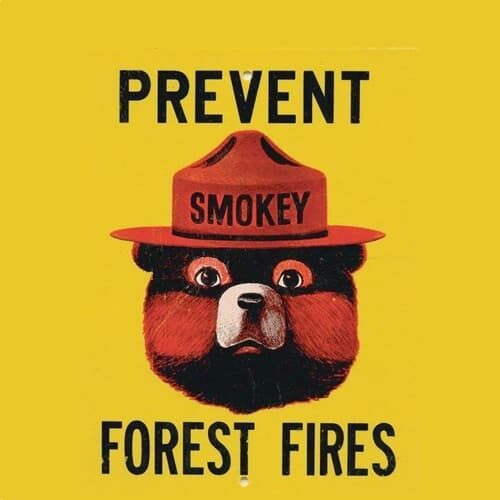
Fire Suppression
Many people think of fires in the forest as bad, so they work hard to prevent or suppress them. But longleaf forests NEED regular fire to support habitat for the species that live there!
Resources
Cornell Lab - All About Birds. Bachman's Sparrow
Environmental Monitor (2015). Longleaf pine loving Bachman's sparrow needsmore than isolated patches of forest to thrive.
